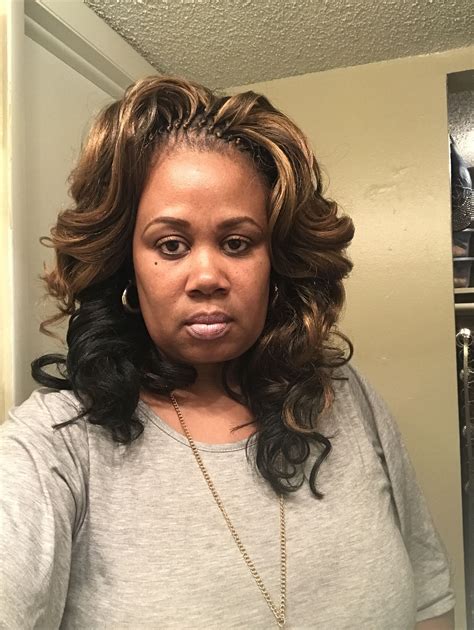Tree braiding of human hair is booming industry that has quickly gained popularity over the last decade. With the increasing demand for natural-looking and long-lasting hair extensions, tree braiding has emerged as a game-changer in the hair industry.

Industry Statistics
According to the American Hair Loss Association, over 50 million Americans suffer from hair loss, and this number is expected to rise in the coming years. This growing problem has fueled the demand for effective and aesthetically pleasing hair replacement solutions, leading to the surge in the popularity of tree braiding.
The Promise of Tree Braiding
Tree braiding is a unique technique that involves using natural human hair to create extensions that are seamlessly integrated with the client’s existing hair. The process begins with the selection of high-quality hair that matches the client’s texture and color. The hair is then meticulously braided onto individual strands of the client’s natural hair, using a specialized knotting technique.
Unlike traditional hair extensions, which often use artificial materials or bulky adhesive strips, tree braiding utilizes human hair, resulting in a natural and undetectable blend. Additionally, the braiding process does not damage the client’s hair, making it a safe and long-lasting solution for hair enhancement.
Advantages of Tree Braiding
- Natural-looking and undetectable integration
- Seamless blending with existing hair
- No damage to natural hair
- Long-lasting results
- Customizable length and volume
Tree Braiding Applications
The versatility of tree braiding allows it to be used for a wide range of hair enhancement applications, including:
- Adding length and volume to fine or thinning hair
- Creating trendy hairstyles and updos
- Repairing damaged or broken hair
- Enhancing hair texture and color
Motivations for Tree Braiding
- Desire for longer, thicker hair
- Wanting to explore new hairstyles without damaging hair
- Need for a natural-looking and long-lasting hair replacement solution
- Seeking a way to improve hair texture and color
- Expressing personal style and individuality
Tips and Tricks
- Choose a reputable salon or stylist with experience in tree braiding
- Bring a picture of your desired hairstyle to the consultation
- Allow ample time for the braiding process, which can take several hours
- Use sulfate-free shampoos and conditioners to prolong the life of the extensions
- Gently brush and detangle the extensions to prevent matting
- Avoid heat styling tools around the braiding site
- Get regular professional touch-ups to maintain the look and prevent damage
Pain Points of Tree Braiding
- The process can be time-consuming and labor-intensive
- The initial investment can be more expensive than other hair extension methods
- Requires regular upkeep and maintenance
- May not be suitable for all hair types or scalp conditions
FAQs
- Is tree braiding painful? No, the braiding process is not painful, but some clients may experience mild discomfort during braiding or removal.
- How long do tree braids last? Tree braids can last up to 3 months with proper care and maintenance.
- Can I wash and style my tree braids? Yes, you can wash and style your tree braids using gentle products and avoiding heat styling around the braiding site.
- Who is a good candidate for tree braiding? Tree braiding is suitable for individuals with fine, thinning, or damaged hair who desire natural-looking and long-lasting hair enhancements.
- Can tree braiding be used to create different hairstyles? Yes, tree braiding can be used to create a wide range of hairstyles, including updos, braids, and ponytails.
Tables
| Aspect | Traditional Hair Extensions | Tree Braiding |
|---|---|---|
| Material | Artificial hair or animal hair | Human hair |
| Attachment | Adhesive strips or clips | Braiding |
| Damage to natural hair | Can cause breakage | No damage |
| Durability | 1-2 months | Up to 3 months |
| Cost | Generally less expensive | Generally more expensive |
| Pain Points | Tree Braiding | Alternative Solutions |
|---|---|---|
| Time-consuming process | Consider clip-in or tape-in extensions | |
| Expensive | Explore synthetic hair extensions or hair toppers | |
| Requires regular maintenance | Opt for permanent hair extensions or wigs |
| Motivations | Tree Braiding | Related Treatments |
|---|---|---|
| Longer, thicker hair | Hair transplant surgery or laser hair therapy | |
| New hairstyles | Hair coloring or perming | |
| Hair replacement | Scalp micropigmentation or hair systems | |
| Improved hair texture | Hair steaming or hair masks | |
| Personal expression | Hair jewelry or temporary hair extensions |
| Applications | Tree Braiding | Related Techniques |
|---|---|---|
| Length and volume addition | Halo hair extensions or hot fusion extensions | |
| Hairstyle creation | Hair weaving or dreadlocks | |
| Hair repair | Hair bonding or keratin treatment | |
| Texture enhancement | Japanese hair straightening or Brazilian blowouts | |
| Color enhancement | Hair highlighting or balayage |
